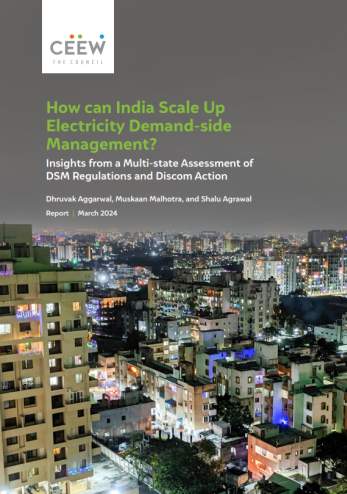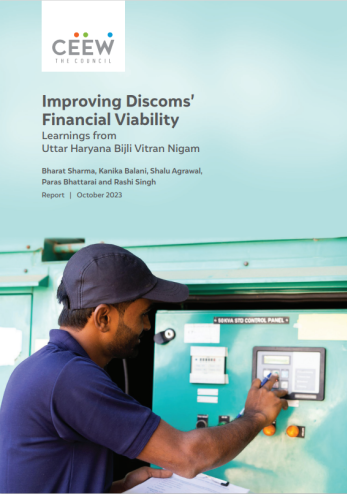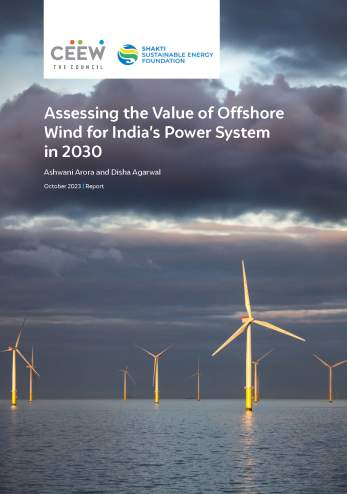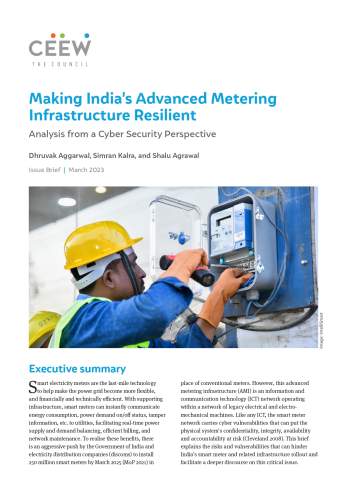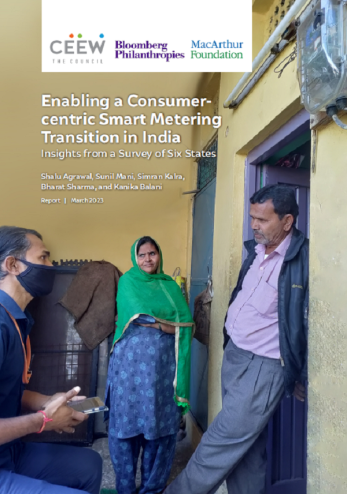Paper
Rural Electrification Policy and Enterprise Business Models in India
Responding to change
Victoria Plutshack
October 2018 | Power Markets
Suggested Citation: Victoria Plutshack. 2018. Rural Electrification Policy and Enterprise Business Models in India: Responding to Change. New Delhi: Council on Energy, Environment and Water.
Overview
This paper, in collaboration with the Cambridge Centre for Environment, Energy and Natural Resource Governance, provides an overview of the impact of rural electrification policies through the lens of enterprise. It focuses on the dynamics between rural electrification programs and business models. The paper incorporates in-depth, semi-structured interviews across a range of enterprises, government agencies, and research institutes, with a focus on enterprises in Bihar, Uttar Pradesh, and Rajasthan.
Key Findings
- Governments are relying on non-state actors to provide rural electrification, and in the case of India, this involves central financial assistance that targets particular off grid technologies, and contracting out the electrification of rural villages.
- Enterprises are impacted by policy directly where their business models interact with programmes, but changes have knock-on effects to the rest of the business model.
- The predominant financial pathway starts with a government subsidy, then moves to a grant-subsidised model and, finally, a number of enterprises are trying to remove the subsidy component from their model.
- Enterprises rarely go through all three financial steps and no enterprise (in this research) moved from a later state to an earlier one.
- When high subsidies were introduced, customers stopped buying full price products. Alternatively, rumors of subsidies cause prospective customers to anticipate subsidies, depressing demands.
- Policy uncertainty makes incorporating subsidy into the revenue model risky.
- Revenue streams and technology are the two aspects of the business model that are initially impacted by rural electrification programmes.
- Knock-on effects led many enterprises to change large parts of their business model. In India, changes can be seen in a broad trend 1) towards grid-connected customers, and 2) some movement away from solar home systems by small and medium scale enterprises.
Key Recommendations
- Minimise the number of tenders that are unmet, as this would improve the government’s support for the solar home system market.
- Improve support for the solar home system market by incorporating enterprise stakeholders in decision making.
- Provide financial support through subsidy or through improved financing options to all the enterprises involved in the process of providing rural electrification.
- Relax eligibility requirements for the small and medium-sized enterprise (SME) to allow enterprises with a shorter history to apply for the government’s schemes.
- Provide manageable contracts to SMEs and larger enterprises should have more control over the amount of work they wish to take on.
In the Indian off-grid solar context, revenue streams and technology are the two aspects of the business model that are initially impacted by rural electrification programmes.




